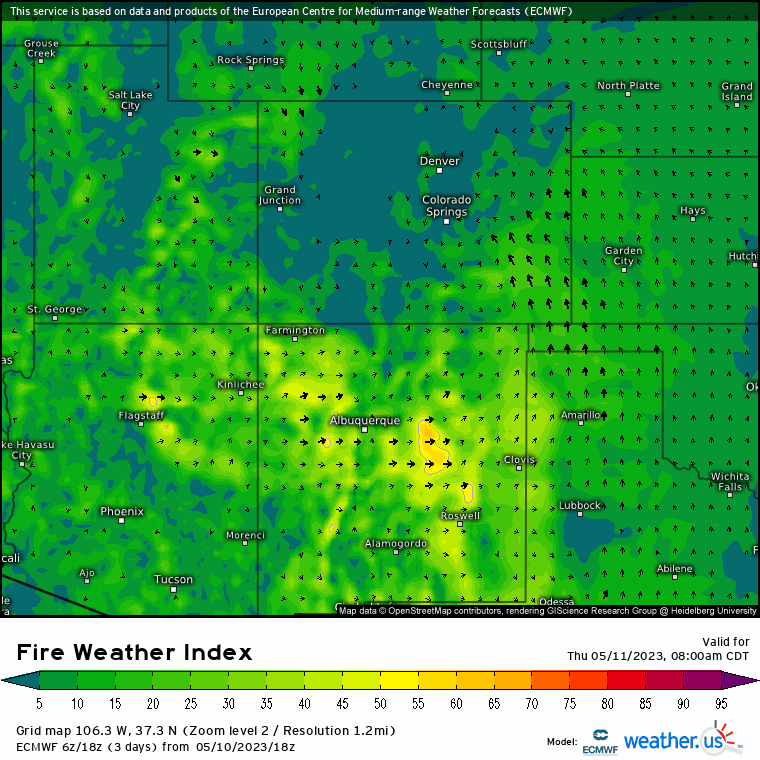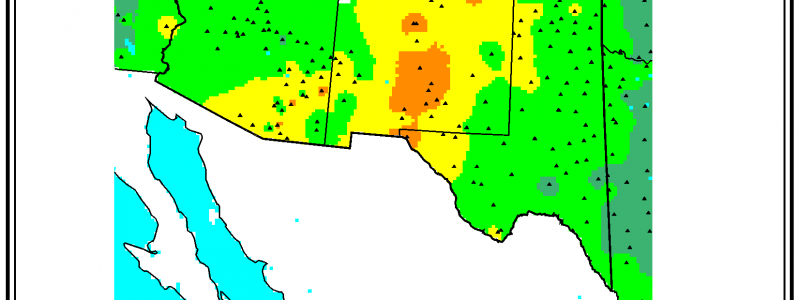
Ingredients Coming Together For Fire Weather: Southwest
Across the Southwest, in particular in New Mexico and extending toward the TX panhandle, an environment will render a conducive setup for fire weather concerns.
Behind a departing shortwave trough, a belt of westerlies will follow behind. As a result of the pressure gradient with high pressure shifting in behind, causing winds to advect eastward across NM, we can see below at 925mb that the wind profile is unidirectional (from the boundary layer up to 500mb). Due to the fact that we have wind shear uniformly straight, this allows for deep mixing to occur with plenty of sunshine (sun causes convective currents thereby mixing the lower atmosphere); a well-mixed lower atmosphere raises the temperature while lowering the dewpoint.
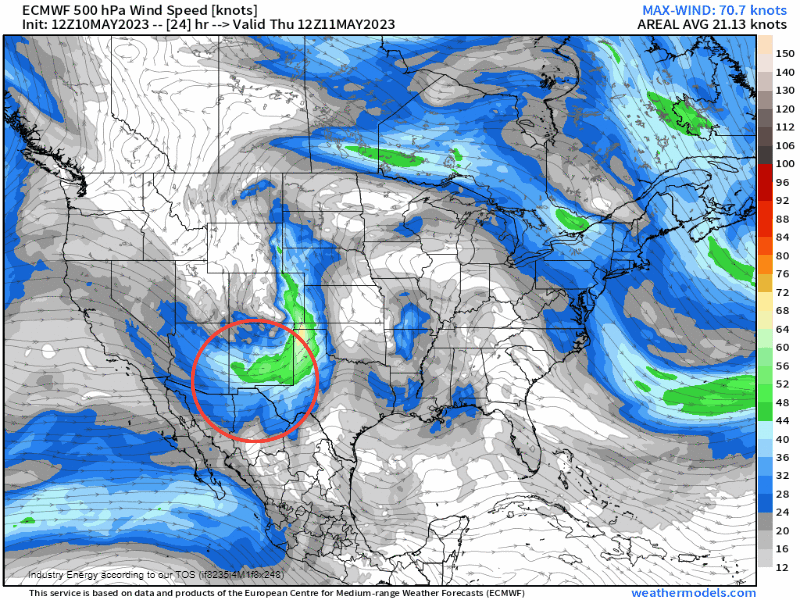

Through the day, it’s no coincidence that we see relative humidity values actually drop steadily through the day today to below 20%. With high pressure and sinking air, mixing, and breezy surface winds – we’re culminating a situation that is auspicious for elevated fire weather.
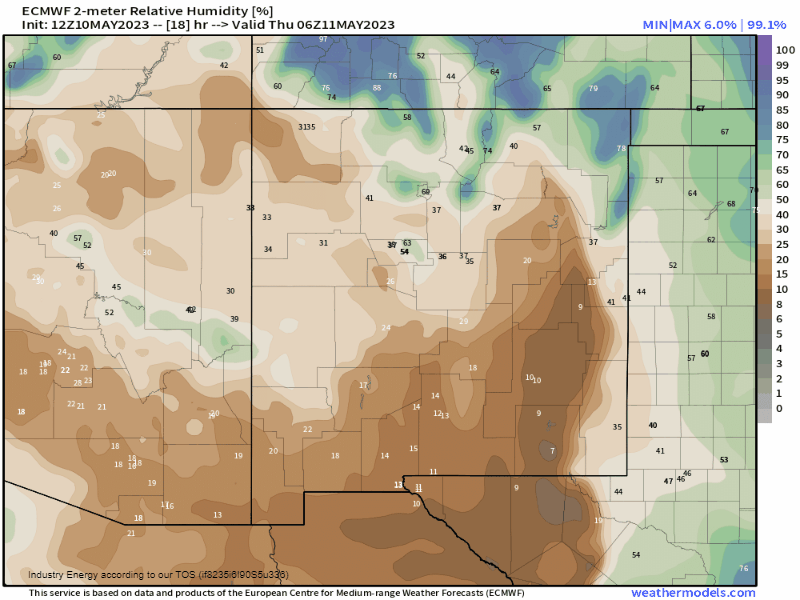
Courtesy of Tropical Tidbits, a point-and-click area averaged sounding reveals a very well mixed atmosphere where verbatim this goes all the way up to 450mb, though using 850mb as the “surface” since this is taken at elevation greater than 4,000 ft. Furthermore, when winds descend higher elevation topography, we see downsloping occur, which warms the parcel of air even more as it descends toward the ground and dries it out.
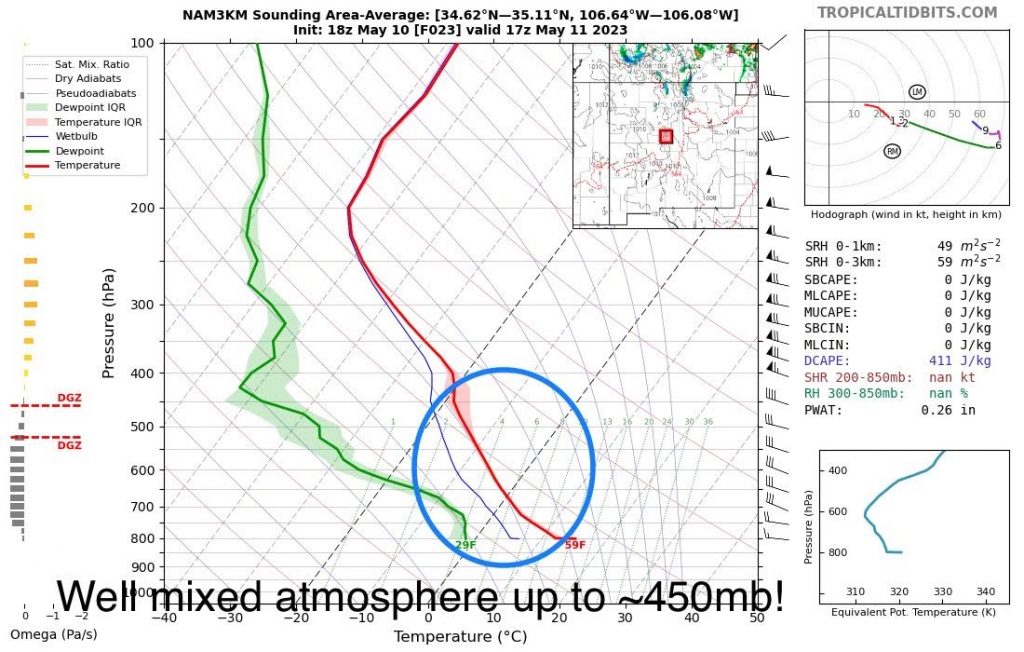
At the surface, we see widespread 10 – 20 mph sustained winds, and a steadfast westerly wind blowing across New Mexico into TX, as a surface low seen across CO pulls away toward the northeast.
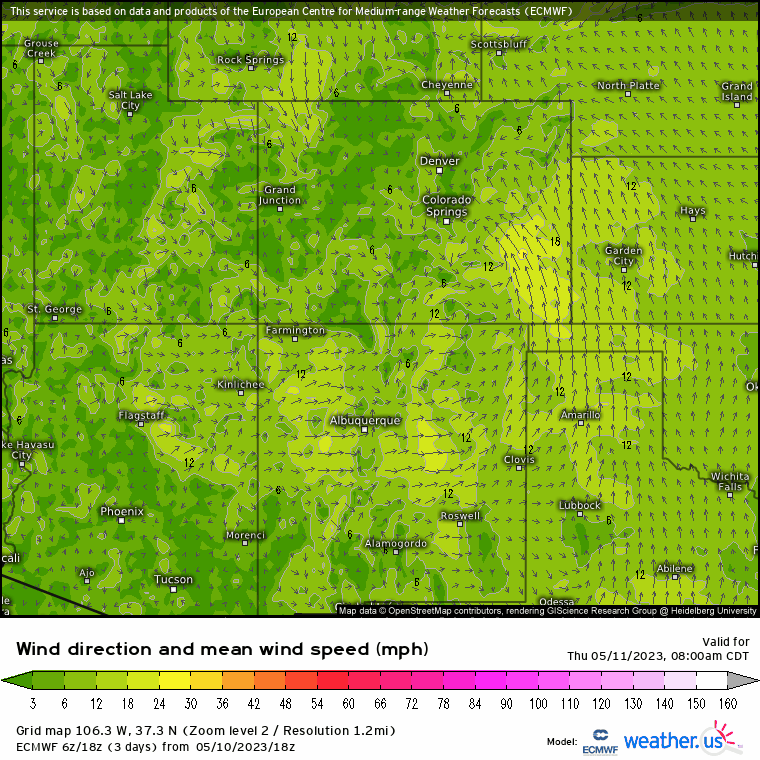
Lastly, the National Interagency Fire Center’s observations reveal that this region is at minimum, a “high” in terms of susceptibility to fire weather conditions. This also reveals that area fuels are rather dry, which is another crucial component in elevating fire weather.
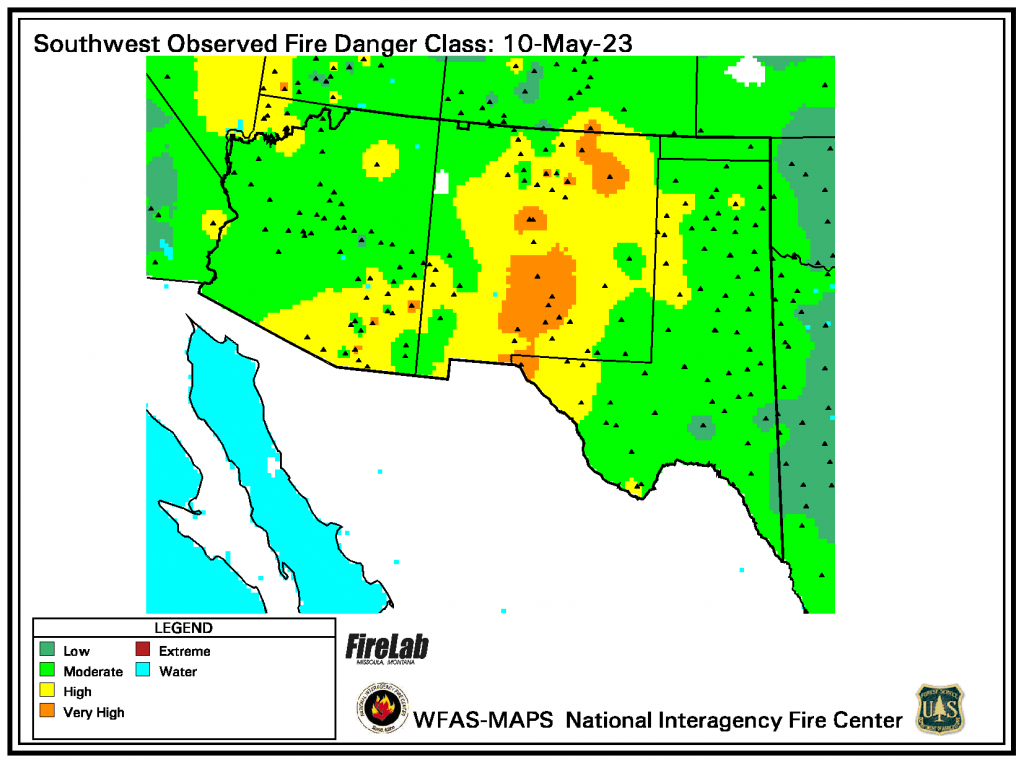
Once we put it all together, we can see through using the ECMWF’s fire weather index that a general swath of >80% probability for fire is elevated in the afternoon across the northern tier of NM and into the western edge of the panhandle of TX. Therefore, it’s important that any cause of human-induced sparks are mitigated entirely, and to be on the lookout for brush wildfires that can occur at any instant and spread for this area.
